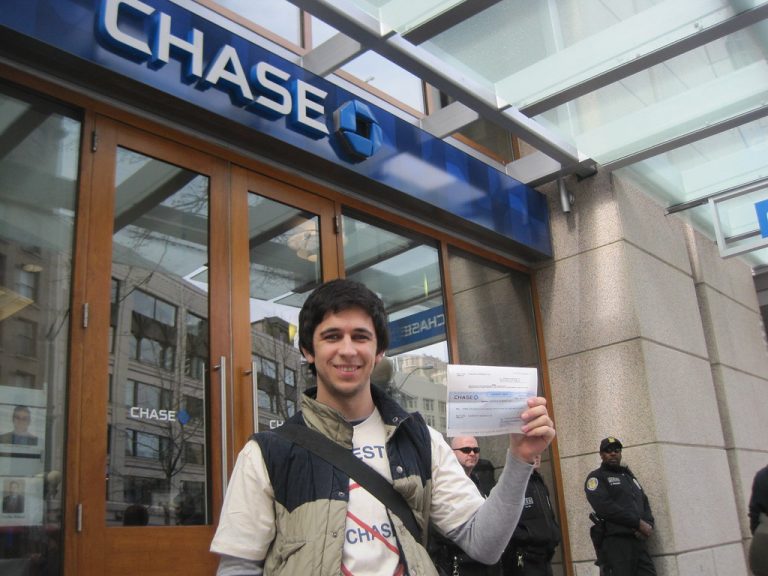![[BEST ANSWERS] How Much Money Do ATMS hold? 2 How much money do ATMS hold?](https://milvestor.com/wp-content/uploads/2021/11/How-much-money-do-ATMS-hold-1.jpg)
Ever wondered how much money do ATMS hold? For a variety of rationales, Automated Teller Machines rarely run out of cash. In essence, there are only a few circumstances in which an ATM may not process customer withdrawals due to insufficient money.
How much money Do ATMS hold?
ATM machines hold a lot of money. The average ATM holds between $50,000 and $200,000 in cash. This may not seem like much compared to the billions of dollars that banks have available in their vaults, but it’s a huge amount of cash for one individual to have access to.
The amount of money an ATM holds varies depending on the size of the machine. Smaller ATMs typically hold less than $10,000 in cash. Larger ATMs can hold as much as $200,000 or more in cash.
There are three main types of ATMs:
Cash dispensing only: This is the most common type of ATM and it’s usually found at banks and credit unions. It can hold up to $2,500 in cash in denominations ranging from $20s to 100s.
Cash dispensing/deposit accepting: This type of ATM is used by banks and credit unions as well, but it also accepts deposits from customers and makes those deposits into their accounts. It can hold up to $5,000 in cash.
Cash dispensing/deposit accepting/balance inquiry: This is a newer type of ATM that allows customers to make deposits as well as withdraw funds from their accounts at the same time they withdraw cash from their accounts or vice versa. These ATMs can hold up to $10,000 in cash.
What is ATM, and how it works?
An automated teller machine is a type of internet financial services terminal that allows customers to conduct basic transactions without the assistance of a teller or regional office staff.
Everyone with a credit or debit card can get cash at most ATMs. In addition, customers can use ATMs to perform self-service deposits, cash withdrawals, bill payments, and bank transactions.
The financial institution where the account is held, the ATM operator, or both often charge fees for cash withdrawals. Using an ATM run by the financial institution that owns the finances can avoid all or any of these fees.
Can ATM be tracked?
Banks can use GPS tracking for ATMs to help apprehend offenders in addition to the methods currently available on the market. This system can assist authorities at any time in reducing theft and, if money is stolen, eventually recovering the funds. Now we must discuss some of how a GPS tracking system can assist in the prevention of ATM fraud.
How often are ATMs refilled?
ATMs in a bank’s branch offices are usually refilled every day. Maybe once a week if the ATM isn’t in a branch office. When there is only one ATM in a location, refilling is likely to b carried out on the weekends if the cash runs out. The next business day, a place with numerous ATMs will be refilled.
Naturally, an ATM will stop processing payment when all its cassettes are empty. Whenever the quantity of notes in each cassette falls below a certain threshold, the ATM will activate the switch. This same switch will attempt to play all of the cassettes’ notes. The ATM will send out a message to the switch when it is empty.
What happens when ATM has no money?
A lump-sum penalty will be imposed if a bank fails to ensure timely cash availability at ATMs. Any non-compliance in this regard will be taken severely and result in a financial fine as outlined in the ATM Penalty Scheme.
Who fills money in ATM machines?
You are responsible for loading cash into the ATM or having a third party load cash into the machine as the owner of the ATM.
Customers withdraw cash from the ATM and have it deposited back into a bank account of their choice daily. If a company owns its ATM outright, it can replenish it on its own time. This isn’t always the most straightforward option, but it’s usually the most effective way to increase ATM revenue.
Having enough cash on hand to reload the machine when it runs out is part of the problem. This necessitates having a significant amount of money on hand for business owners.
How much money can you withdraw from an ATM at one time?
Your banking relationship will play a significant role in this. However, depending on the ATM, daily cash withdrawal limits can range from $300 to $5,000.
Personal banks and credit unions impose their limits. The number of accounts you have and your banking history can also affect your ATM withdrawal restriction.
Whether you’re new to a bank and open a basic checking account, your Cash withdrawal restriction might be lower than if you’ve had a standard bank account there for a decade. Moreover, some ATMs may set their limits on how much cash can be withdrawn at any given time.
What to Do if an ATM Doesn’t Give You Money?
Some pasts of the world are still cash-based economies, with the majority of the Population preferring cash transactions to digital payments.
People who prefer cash transactions typically withdraw money from ATMs with their debit or credit card. ATMs are incredibly convenient because they eliminate the need to wait in long lines at banks to withdraw money.
The money you withdraw from ATMs sometimes gets stuck in the machine, but the amount is debited from your bank account. One of the major flaws is cash getting attached at ATMs, which can happen due to error or forgery.
Even though this problem can be resolved, it may cause a great deal of anxiety. This can be incredibly aggravating if you’re short on cash.
How do ATM withdrawal limits work?
For practical and security reasons, banks can impose ATM withdrawal limits.
To begin with, ATMs can only hold a certain amount of cash, and banks can only distribute a certain amount of money to customers at any given time. Therefore, limiting the amount of cash withdrawn at an ATM allows the bank to keep track of the available money.
The other reason is to safeguard customer accounts and ensure their security. For example, assume your debit card and PIN have been stolen. They may be able to drain your checking or savings account and take all of your money if there is no ATM withdrawal limit. So while Cash withdrawal restrictions may seem inconvenient, they are necessary.
How much can you take out of an ATM in 1 day?
This is highly dependent on your commercial bank. However, ATM cash withdrawal limits can range from $300 to $5,000 per day, depending on the ATM.
Independent banks and credit unions set limits. Your ATM withdrawal limit may also be influenced by the accounts you have and the nature of your financial services history.
If you are new to a bank and open a basic checking account, your ATM withdrawal limit may be lower than someone who has had a premium checking account for around a decade.
Furthermore, some ATMs may impose their limits on the amount of cash that can be withdrawn per withdrawal.
How can I legally own an ATM?
Find good retail locations like gas stations, convenience stores, bars, shopping malls, and nightclubs.
- To provide an ATM, reach an agreement.
- Get a new ATM.
- Set up the equipment. The ATM can be used with an internet connection, a phone line, or a mobile phone.
- Fill the ATMs with cash.
Note:
You collect the transaction fee, also known as a “surcharge,” every time a customer withdraws money. Surcharge fees in the United States average around $3.00.
How profitable is it to own an ATM?
The market demand for automated teller machines is high right now in places like malls, convenience stores, gas stations, amusement parks, office buildings, restaurants, clubs, sports bars, hotels, and other retail locations, and it’s only going to get higher.
The locations listed above usually draw larger crowds of people looking for quick and easy cash. The busier the place, the more ATM withdrawals, and money you make.
Generally, you purchase the machine and install it in a merchant’s establishment in exchange for a share of the surcharge fee. This is one method of increasing the machine’s appeal to the business owner.
Do ATM owners make money?
There are several advantages of owning an ATM, one of which is that you can keep all ATM surcharge fees. With 6–10 transactions per day, this equates to a daily gross profit of $15–25. It would help if you looked into what the average ATM surcharges are in your area.
Sub note:
What kind of profit can you expect if you start an ATM business? As previously stated, the monthly income potential of one ATM in a retail establishment with high foot traffic could be over $700. However, not all of your ATMs may be located in these types of locations, resulting in higher or lower monthly net profits.
At the moment, the average ATM surcharge fee is $3.00, though some specialized or high-demand locations may charge even more.
Nearly a third of Americans use an ATM at least once a week, according to statistics. In a retail environment, the average ATM performs 6–10 transactions per day. Assume that each ATM transaction nets you $2.50.
Can ATM be tracked?
This is the primary reason why every business invests in GPS technology. Moreover, it is the most significant advantage that banks and other financial institutions can gain from installing Tracking devices systems on their Automatic teller machines.
If an ATM is stolen, the next step for the business is to notify the insurance company. It is much easier for law enforcement to track and combat crime when an ATM is equipped with a GPS tracking device.
If an ATM is stolen, the firm may be able to recover it. This helps to save the machine by allowing it to be retrieved before it is damaged.
How can I increase my ATM withdrawal limit?
Call your bank and request a temporary increase in your ATM limit as soon as you know you’ll need more money.
They may request certain information to verify your identity, but you may be able to increase your credit limit by several hundred dollars if you do so. Requesting a raise may not always be successful, but you have nothing to lose by trying.
Although most ATM limit increases are only temporary, if you frequently use more than the maximum, you might be able to get a permanent increase.
How do I withdraw a large amount of money from my bank?
Instead of using a card, you can use a withdrawal slip and present it to a teller at your bank. It isn’t complicated; all you have to do is submit it the way you do regular transactions.
Bring your driver’s license, state ID card, or passport, as well as your Social Security number. Then, start preparing to respond to questions about your withdrawal, such as how you intend to use it.
To complete IRS Form 8300, the teller must ask these questions. Banks must file a Report of Cash Payments Over $10,000 Received in a Trade or Business for cash withdrawals over $10,000. In addition, the teller must file a suspicious activity report if you refuse to respond or give evasive answers.
What bank has the highest ATM withdrawal limit?
The amount you may withdraw from an ATM is determined by several criteria, including the type of account you have and your account history.
That implies that even if you chose a bank with a reputation for having significant ATM withdrawal limits, you might not be able to use them.
If you require a large sum of money, the best choice is to go to a bank in person, withdraw cash with purchases, or visit the ATM several times.
- What Does Pay Distribution Mean For Direct Deposit? - July 5, 2025
- The Evolution of Stablecoin Pegs: Exploring Challenges and Risks - July 5, 2025
- Does Meijer Take Google Pay? - July 5, 2025




One Reply to “[BEST ANSWERS] How Much Money Do ATMS hold?”